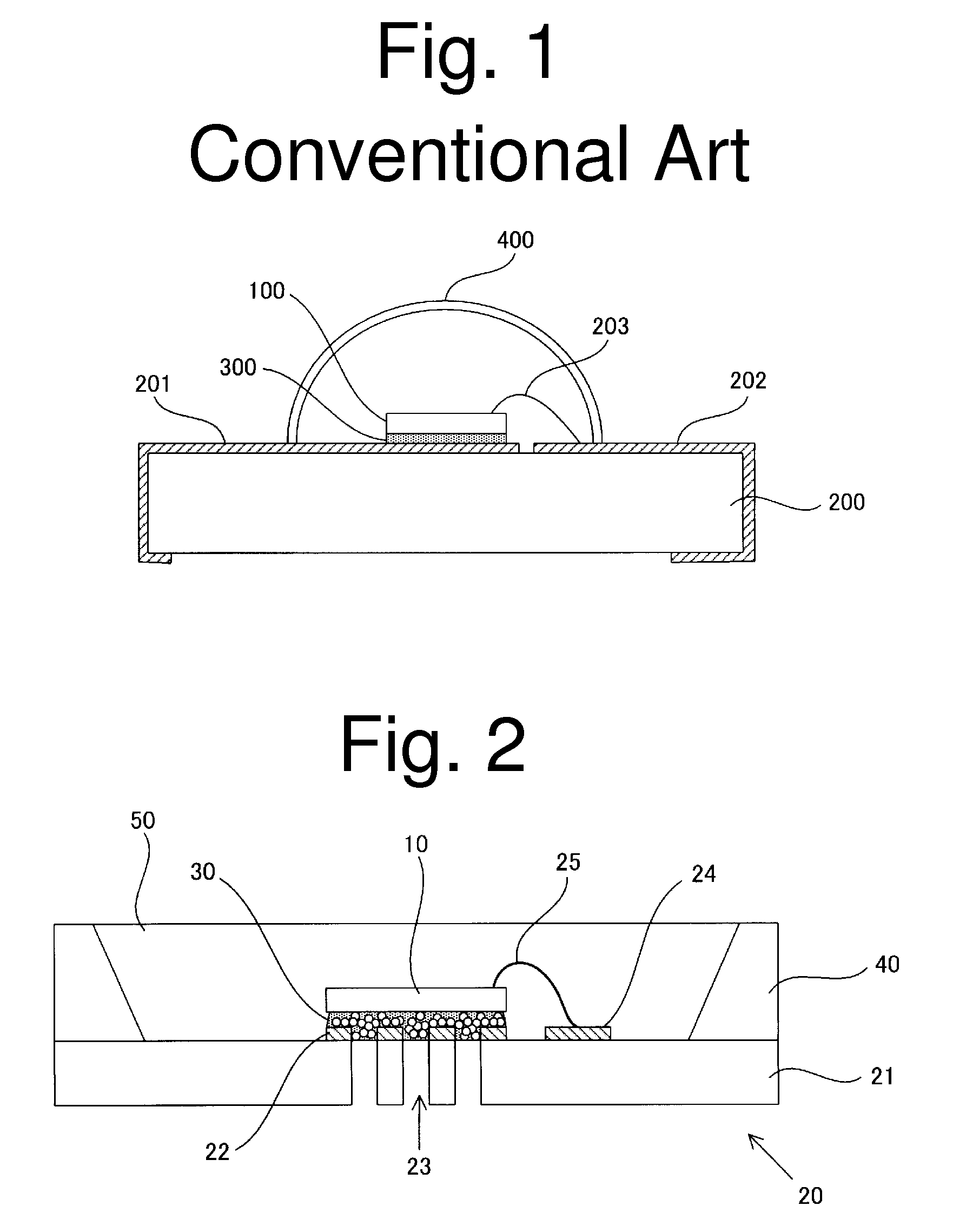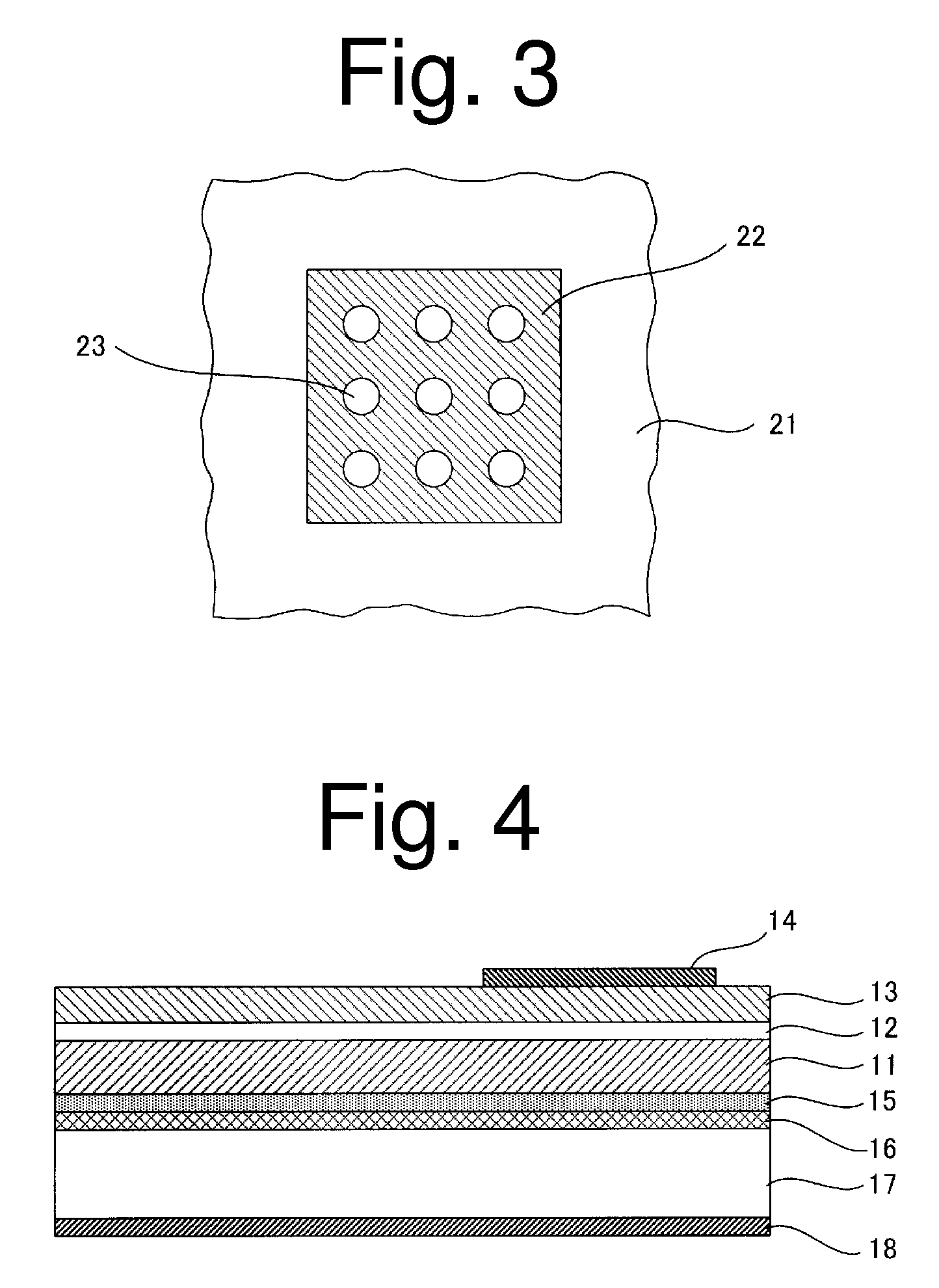Optical semiconductor apparatus and method for producing the same
- Summary
- Abstract
- Description
- Claims
- Application Information
AI Technical Summary
Benefits of technology
Problems solved by technology
Method used
Image
Examples
Embodiment Construction
[0023]A description will now be made below to optical semiconductor apparatuses of the presently disclosed subject matter with reference to the accompanying drawings and in accordance with exemplary embodiments. It should be noted that the same or similar components in the drawings are denoted by the same reference numerals.
[0024]FIG. 2 is a cross-sectional view illustrating the configuration of an optical semiconductor apparatus of one exemplary embodiment made in accordance with principles of the presently disclosed subject matter. FIG. 3 is a top partial view showing a die pad formation area of the ceramic substrate of the optical semiconductor apparatus.
[0025]The optical semiconductor apparatus can include: an LED chip 10 serving as an optical semiconductor element; a ceramic substrate 20 serving as a package substrate on which the LED chip 10 is mounted; a reflective member 40 disposed on the ceramic substrate 20 so as to surround the LED chip 10; and a light-transmitting resin...
PUM
 Login to View More
Login to View More Abstract
Description
Claims
Application Information
 Login to View More
Login to View More - R&D
- Intellectual Property
- Life Sciences
- Materials
- Tech Scout
- Unparalleled Data Quality
- Higher Quality Content
- 60% Fewer Hallucinations
Browse by: Latest US Patents, China's latest patents, Technical Efficacy Thesaurus, Application Domain, Technology Topic, Popular Technical Reports.
© 2025 PatSnap. All rights reserved.Legal|Privacy policy|Modern Slavery Act Transparency Statement|Sitemap|About US| Contact US: help@patsnap.com



